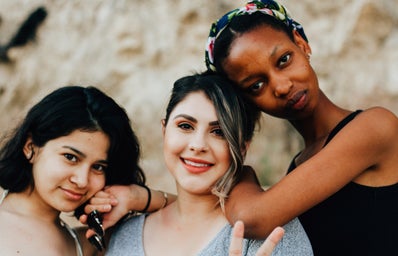*Colorism: prejudice or discrimination against individuals with a dark skin tone, typically among people of the same ethnic or racial group (Merriam-Webster)
I come from a family where, while the castes are the same, the social class and, consequently, the skin color, is vastly distinct. My dad spent most of his childhood out in the sun; he worked day-in and day-out in an effort to grow opportunities beyond the village he lived in. His skin has a great deal of melanin, which is apparent among all his family members. My mom, on the other hand, grew up light-skinned and fairly middle class. I remember visiting her hometown and being shocked that she was the fairest person there. As a result, she was able to indulge in luxuries my dad could not.

As a product of my mom and dad (an American citizen of Indian descent), issues regarding skin color were something I, and many people like me, grew up with. Looking back in history, colorism* in Eastern countries is not a recent feat, but rather something that’s been cultivated for the past few centuries. It’s easy to associate a desire for paleness with wanting to be white, but it actually stems from much more than that. When these countries were colonized by Westerners in the 18th and 19th centuries, the light-skinned Europeans assumed a higher status, while the darker-skinned locals were subjected to enslavement. As a result, emperors and wealthy landowners stayed fair because they could afford to stay inside instead of doing manual labor under the sun. In modern times, the superiority complex of fair-skinned people is subconsciously believed in many areas of Africa, Asia, and even South America. In several parts of India, where caste is extremely prevalent, those of-age can only marry within their caste. However, even with this restriction, the desire for a fair-skinned wife is a huge priority among men.
On my visit to India last summer, a mishap with our luggage forced my family and I to have to repurchase all our toiletries, clothes, and essentials for the next week. Upon entering the numerous department stores lined up in the city main streets, almost all carried either L’Oreal or Unilever whitening products. I talked about skin-lightening and how prevalent it is, but to see a brand heavily promoted in the US (re: L’Oreal) as one of the best drugstore makeup lines in India surprised me. Every time I’ve tried to replace my lost foundation in India, the store employees recommend one that’s lighter than the one I actually need: an event that’s fairly ironic since I’m usually given a darker product in the states. What’s more? They recommended a skin-lightening product to my mom. Yes, my mother — one of the fairest women from her town. Even when you have it, I guess it’s still not enough.
This isn’t just a personal issue, it’s a global one. The skin-lightening industry is reported to be worth between ten to twenty million dollars worldwide. Increasing numbers of explicitly colorist ads are shown on a daily basis. Fair and Lovely, one of the best-selling products in the South Asian subcontinent, tends to follow a staid format: a dark-skinned girl is unable to get a job or get married until she lightens her skin. If this concept was repeated for other products in other countries, I wouldn’t be surprised.
There is an almost subconscious theory within one’s culture that being light-skinned equates to higher intelligence, more success, and more wealth. Those of African-American ancestry generally encounter this colorism on a daily basis. Time and time again, African-Americans with lighter skin complexions are more accepted in the media and work industries. They receive extra keys to the doors of success in white-obsessed America because anything or anyone “too black” is dangerous and corrupt—a notion often related to being from an inner-city rather than its “pristine” suburbs.
I’m not sure what propelled me to write this essay. I’m currently taking an anthropology class that, while I never expected to register for, has given me an amazing opportunity to look at culture through a different lens. I know colorism has always existed and that I face it every day in small, often unseeable ways, but I can’t not be bothered by how little attention is given to the matter. To pit people of the same group against one another cultivates a strain on identity and association. Those offensive Indian advertisements have only recently been banned. Rather than depicting a standard of beauty and associating those of certain social classes with an appearance, maybe it’s time to look past age-old social constructs. It’s 2020 and, as America becomes increasingly diverse, it’s only right that colorism becomes a thing of the past.


